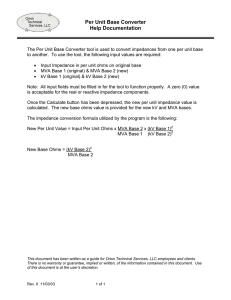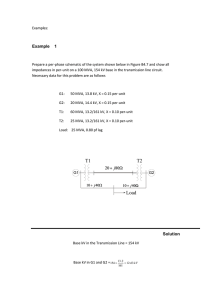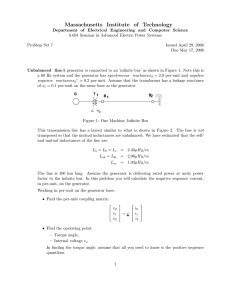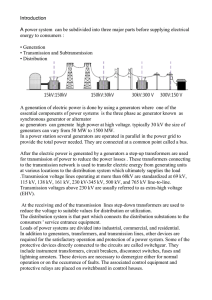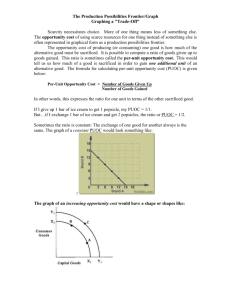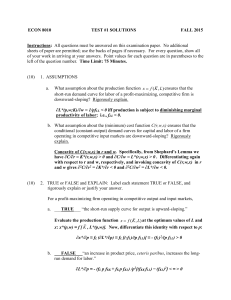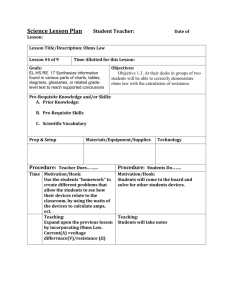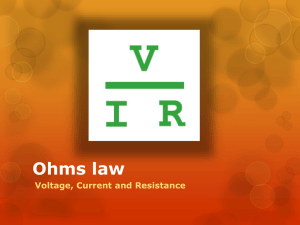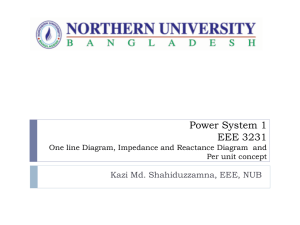Per-Unit & Primary/Secondary Calculations
advertisement
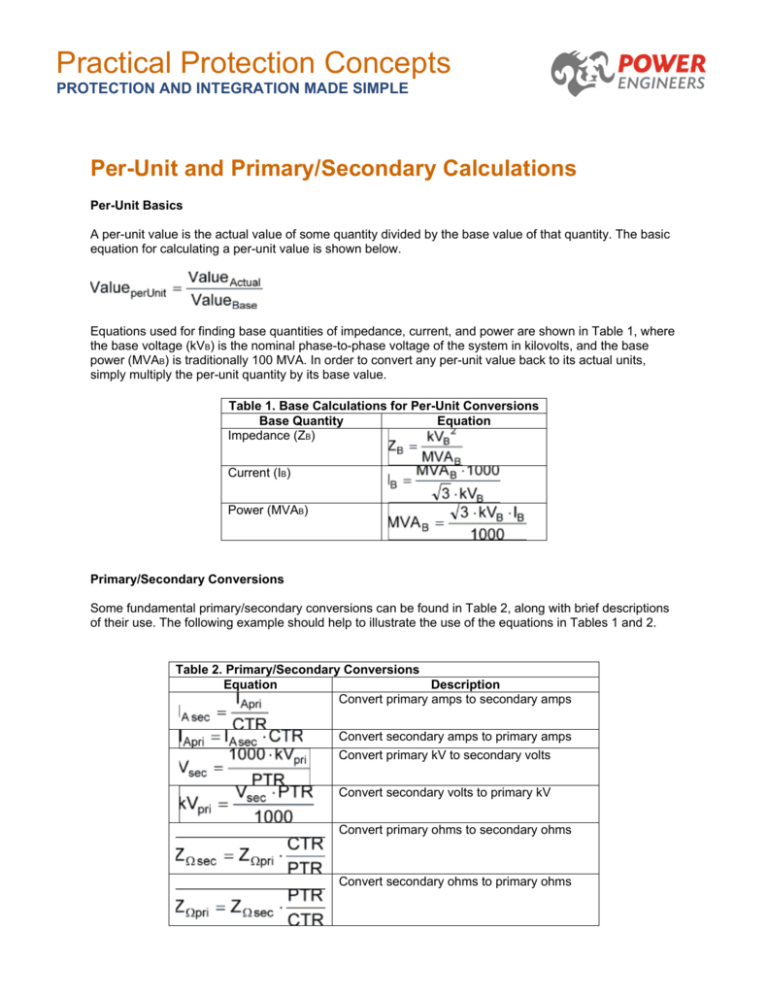
Practical Protection Concepts PROTECTION AND INTEGRATION MADE SIMPLE Per-Unit and Primary/Secondary Calculations Per-Unit Basics A per-unit value is the actual value of some quantity divided by the base value of that quantity. The basic equation for calculating a per-unit value is shown below. Equations used for finding base quantities of impedance, current, and power are shown in Table 1, where the base voltage (kVB) is the nominal phase-to-phase voltage of the system in kilovolts, and the base power (MVAB) is traditionally 100 MVA. In order to convert any per-unit value back to its actual units, simply multiply the per-unit quantity by its base value. Table 1. Base Calculations for Per-Unit Conversions Base Quantity Equation Impedance (ZB) Current (IB) Power (MVAB) Primary/Secondary Conversions Some fundamental primary/secondary conversions can be found in Table 2, along with brief descriptions of their use. The following example should help to illustrate the use of the equations in Tables 1 and 2. Table 2. Primary/Secondary Conversions Equation Description Convert primary amps to secondary amps Convert secondary amps to primary amps Convert primary kV to secondary volts Convert secondary volts to primary kV Convert primary ohms to secondary ohms Convert secondary ohms to primary ohms Example. Line AB is operating at a line-to-line voltage of 230 kV and has positive-sequence impedance ZL= 0.024 85° per unit on a 100 MVA base. The CT ratio is 1200/5 and the PT ratio is 2000/1. If phase distance relays at Bus A are to reach 80% of Line AB, what should the relay reach be set to in secondary ohms? VBase = 230 kV ZBase = (230 kV)2 / 100 MVA ZLactual = (0.024 85°) * 529 Ω ZReachpri = 0.80 * 12.7 85° Ω ZReachsec = 10.16 85° Ω * (1200/5) / 2000 MVABase = 100 MVA ZBase = 529 Ω ZLactual = 12.7 85° Ω ZReachpri = 10.16 85° Ω ZReachsec = 1.22 85° Ω secondary The relay reach should be set to 1.22 85° Ω secondary. The ability to work comfortably with primary/secondary conversions and per-unit calculations is important when working with protective relays. Quick reference tables, like the ones shown above, can be very convenient in the field for making simple conversions. Where a more comprehensive collection of formulas and general reference material is needed, take a look at a pocket reference such as Protective Relaying Quick Reference.
